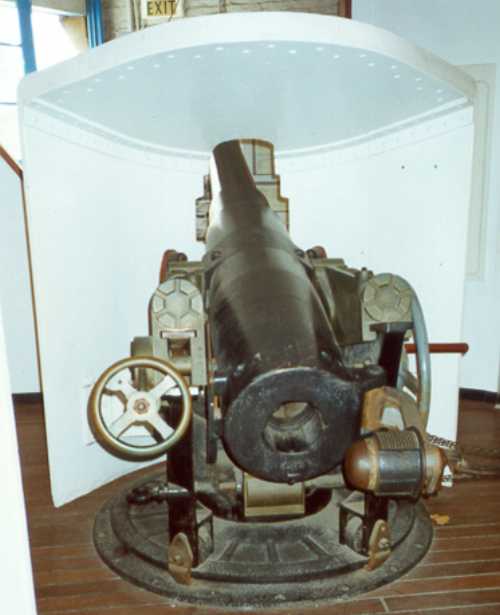|
Some surplus naval guns were allocated as coast defense drill guns, but few were actually used in that role. The Mark I had an A tube which included the breech block, 4 hoops and a trunnion hoop over the breech end. This Mark was withdrawn from service after the similar 6" (15.2 cm) Mark II failed in the corvette HMS Cordelia in 1892. The other marks had an A tube and jacket which included the breech block and included the trunnions. They differed in the number and arrangement of hoops and tubes over the A tube between the jacket and muzzle. Mark II and Mark III were later chase hooped to the muzzle while the Mark IV and V were constructed with these in place. All were originally built with three-motion breech mechanisms. Altogether, 77 Mark I, 150 Mark II, 225 Mark III, 100 Mark IV and 82 Mark V were manufactured. Twelve guns were later converted to drill guns by replacing the breech mechanism with a single motion Welin breech block. These were then redesignated as 5"/25 BLC Marks I/IV and Marks I/V. A breech ring was added and the trunnions repositioned. These changes also allowed an increase in muzzle velocity. One of these guns still survives in the Ordnance Museum at Priddy's Hard, Portsmouth. These guns should not be confused with the later 5" (12.7 cm) field pieces also known as 60 pdrs nor should they be confused with the Australian coast defense guns which included EOC Pattern D 5"/31 (12.7 cm) guns. The data that follows is specifically for Marks IV and V, but the other marks were similar. |

5"/25 (12.7 cm) Mark III gun on Vavasseur
Mark I (VCPI) slide mounting
|